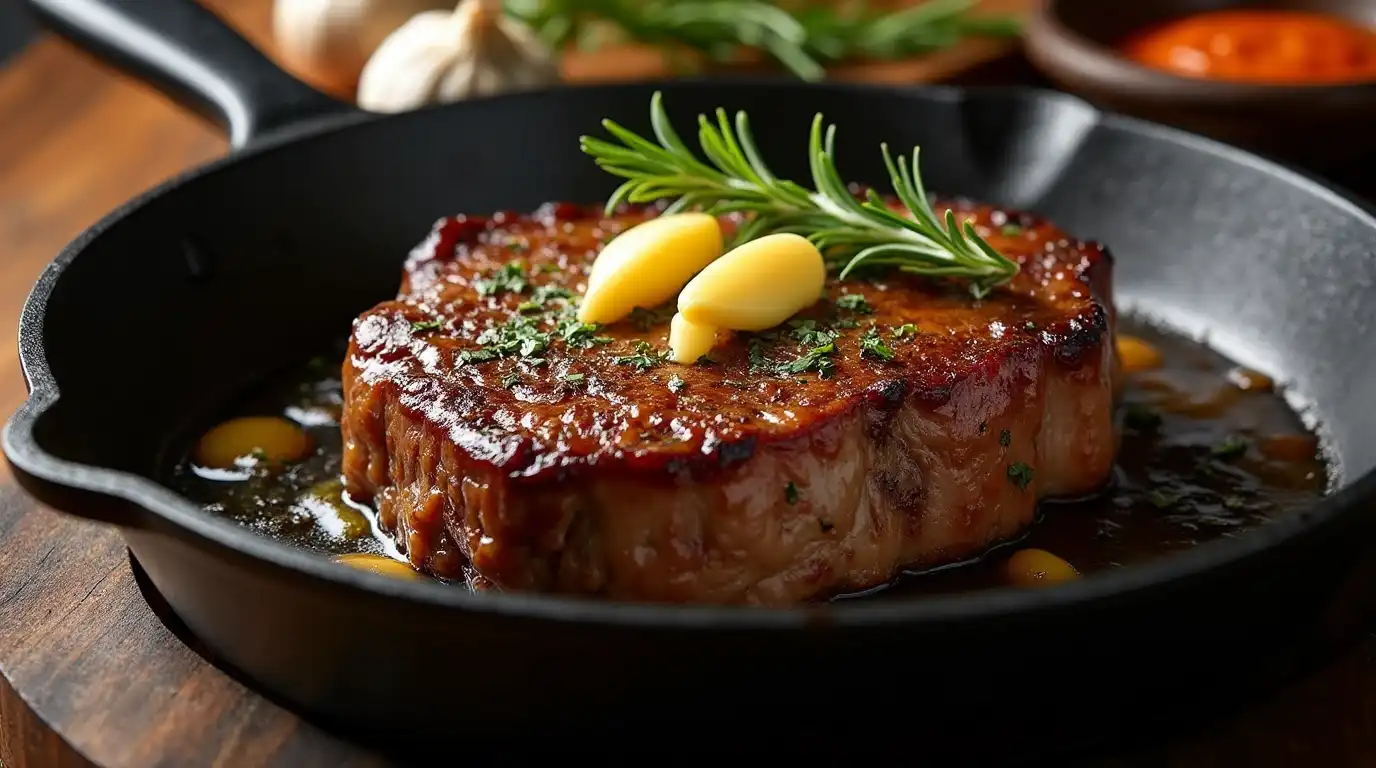Table of Contents
Introduction

Cast-Iron Cowboy Steak has always reminded me of summer evenings at my grandfather’s ranch—when the scent of sizzling beef in a heavy cast-iron skillet meant something legendary was about to hit the table. Have you ever craved that rich, steakhouse-quality flavor but didn’t want to fire up the grill?
Thank you for reading this post, don't forget to subscribe!This thick-cut, bone-in ribeye—known as the cast-iron Cowboy Steak—delivers all the bold, caramelized goodness you’d expect from a high-end restaurant, right from your stovetop. Using a cast-iron skillet not only locks in those juicy flavors but gives the steak that irresistible sear and buttery finish we all love.
Whether you’re cooking for a special occasion or just want to treat yourself, this recipe brings the best of the outdoors inside—no cowboy hat required. Let’s bring that smoky, mouthwatering magic to your kitchen.
🔥 Key Benefits of Cooking a Cast-Iron Cowboy Steak
Cooking a Cast-Iron Cowboy Steak at home isn’t just about making dinner—it’s about creating an experience. If you’ve ever tried to crack the secret to a steakhouse-worthy crust at home—or dreamed of creating a steak so tender and rich it nearly dissolves with each bite, you’re in the right place.
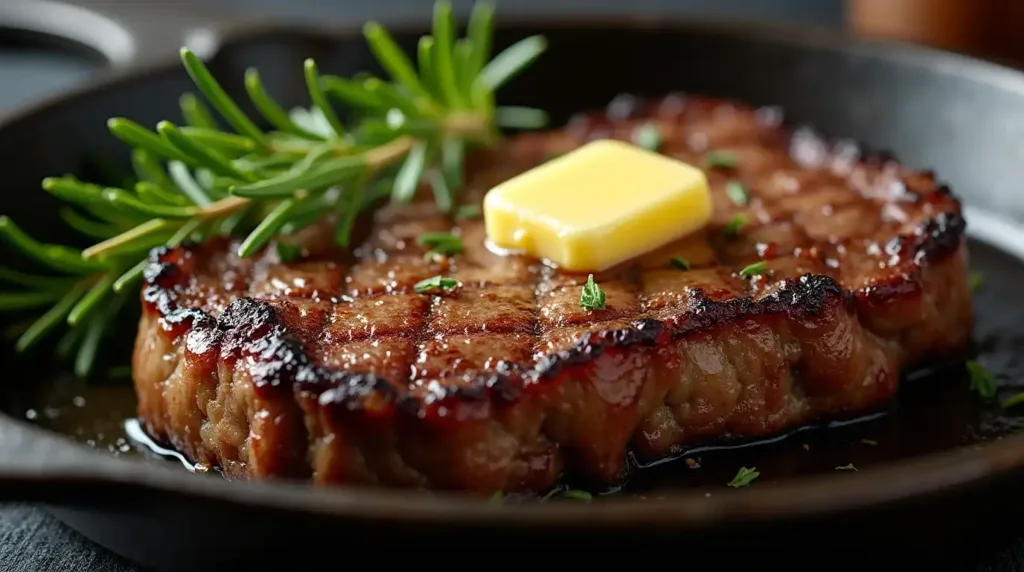
Here’s why this method is a game-changer:
🔥 Intense Sear, Irresistible Crust
What makes a cast-iron skillet special is its unmatched ability to maintain steady, high heat throughout cooking. This helps create a deeply golden, flavorful crust each time you sear. You’ll achieve a rich, golden-brown crust that locks in moisture—no need for a grill.
🧈 Buttery, Tender Perfection
By finishing your steak with herb-infused butter basting, you’ll elevate the flavor to a whole new level. It’s a simple trick that adds richness and gives the steak a glossy, restaurant-worthy finish.
⏱️ Quick, Yet Gourmet
This isn’t an all-day commitment. With a few pantry staples and about 30 minutes, you’ll serve a thick-cut, bone-in steak that looks (and tastes) like it came from a high-end steakhouse.
🌟 Reliable Results Every Time
Using the reverse sear method or a high-heat stovetop technique allows you to control doneness with precision. Whether you’re after medium-rare perfection or something more well-done, a meat thermometer helps ensure consistent, juicy results.
👨🍳 Ideal for Any Skill Level
You don’t have to be a seasoned chef to make this happen. The steps are simple, and I’ll guide you through each one. Whether it’s your first cowboy steak or your tenth, this method delivers confidence and crave-worthy results.
This isn’t just a meal—it’s a celebration of bold flavor, tender beef, and the kind of cooking that feels both rustic and refined. Ready to turn up the heat? Let’s get into the ingredients next.
🛒 Ingredients
Here’s what you’ll need to create this cast-iron cowboy steak:
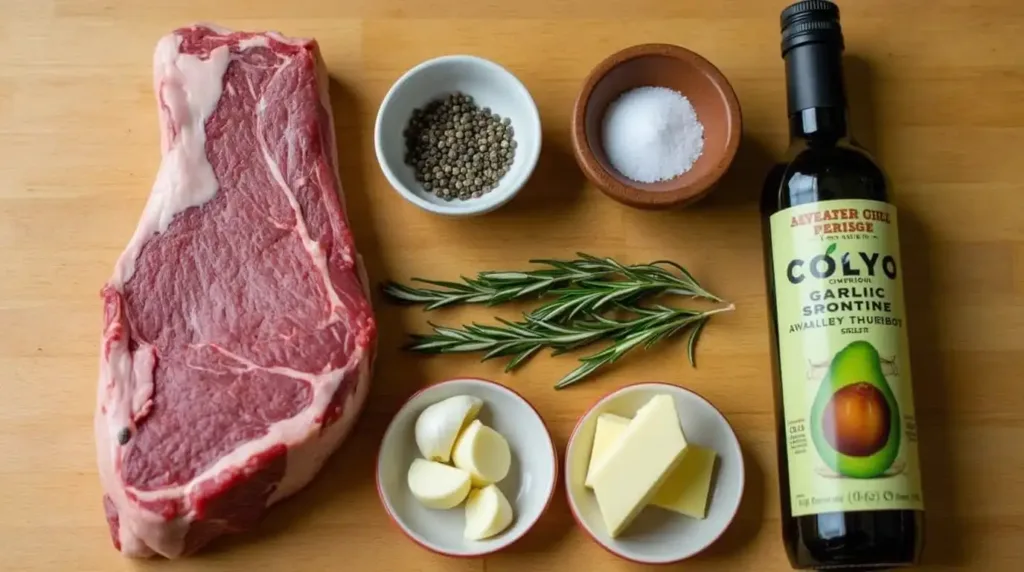
- A bone-in cowboy ribeye steak weighing between 1.5 and 2 pounds, about 2 inches in thickness.
- 2 tablespoons of avocado oil, or any other oil suited for high-heat cooking.
- 1 tablespoon kosher salt
- 1 teaspoon freshly ground black pepper
- 2 tablespoons unsalted butter
- 3 garlic cloves, smashed
- 2–3 sprigs fresh rosemary or thyme
Optional:
- 1 teaspoon smoked paprika for added depth
- 1 tablespoon lime juice for a zesty finish
👨🍳 Instructions
1. Bring Steak to Room Temperature
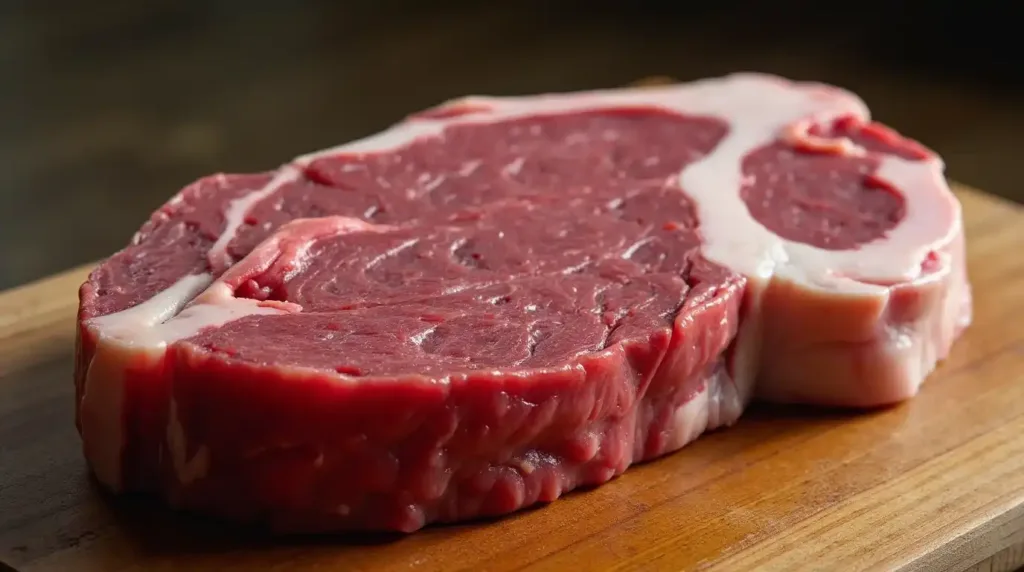
After taking the steak out of the fridge, leave it on the counter for roughly 45 minutes so it can reach room temperature before hitting the pan. This ensures even cooking throughout.
2. Season the Steak
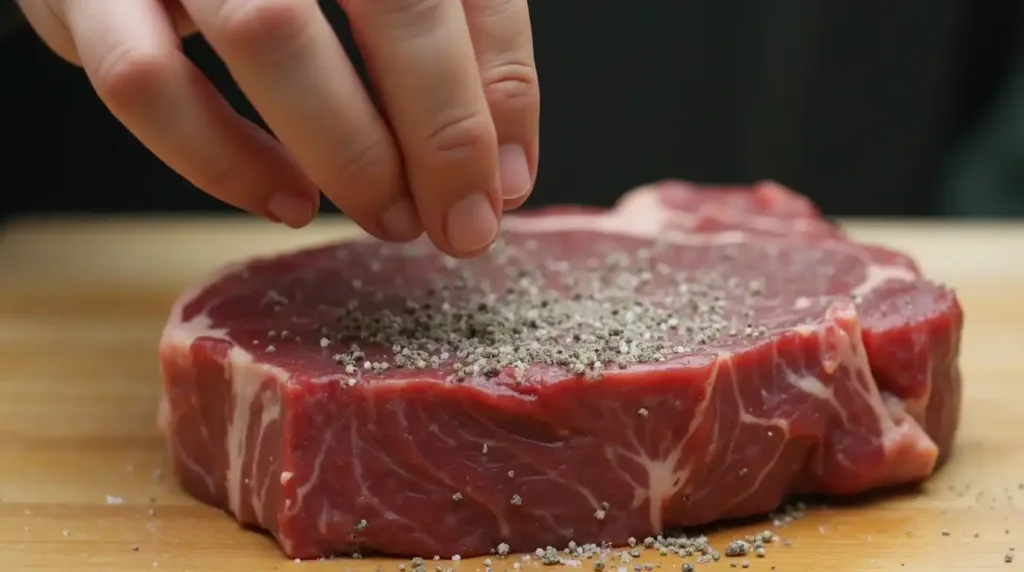
Pat the steak dry with paper towels. Cover both sides of the steak generously with kosher salt and freshly cracked black pepper to enhance its robust flavor. For an extra flavor kick, sprinkle with smoked paprika.
3. Preheat the Cast-Iron Skillet
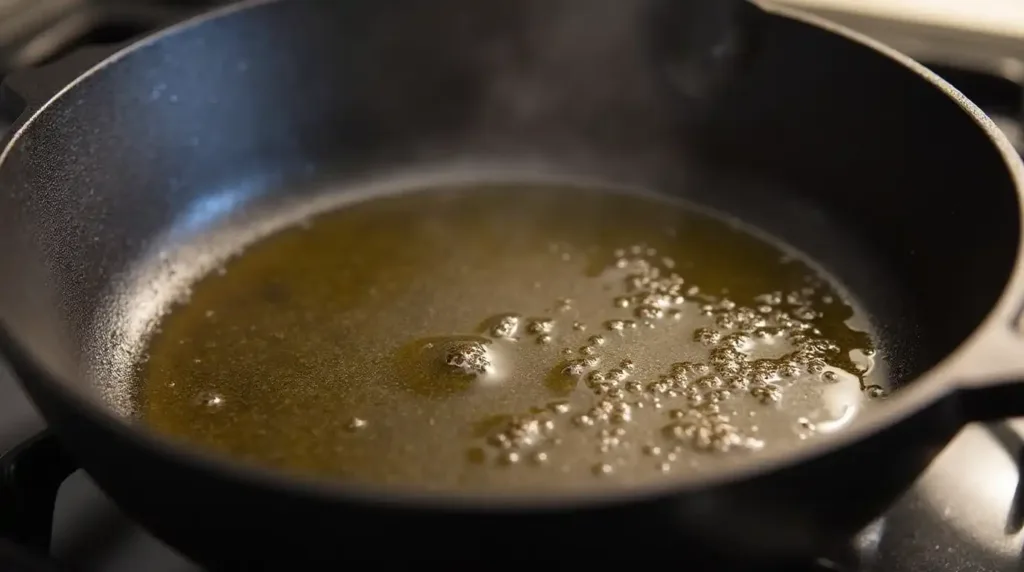
Place your cast-iron skillet over medium-high heat. Add a splash of avocado oil to the pan and heat it until you see a slight smoke trail—your signal that it’s primed for searing.
4. Sear the Steak
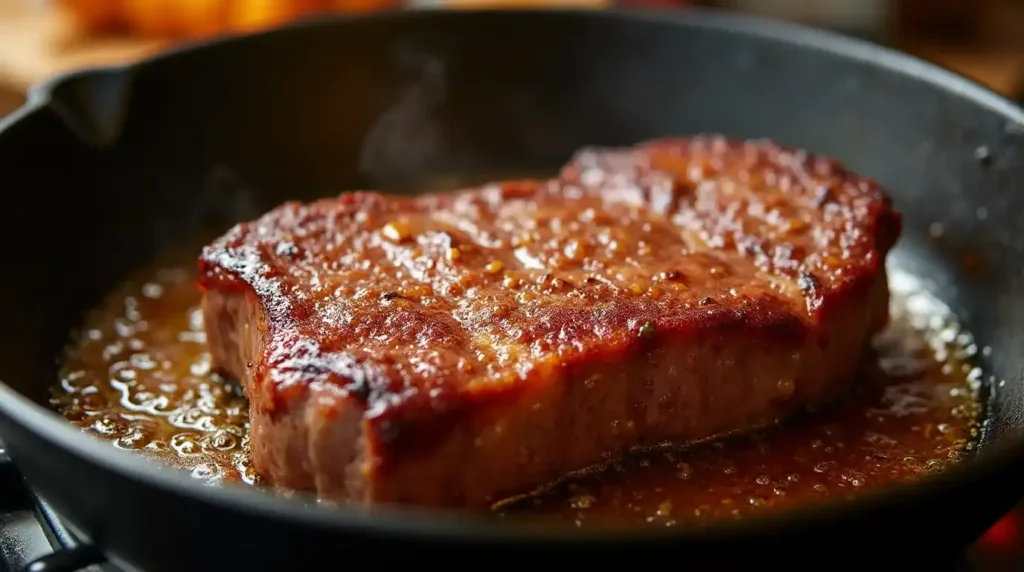
Carefully place the steak in the skillet. Sear for 4–5 minutes on one side without moving it, allowing a crust to form. Turn the steak over and cook for another 4 to 5 minutes to develop a beautifully browned crust on the other side.
5. Add Aromatics and Baste
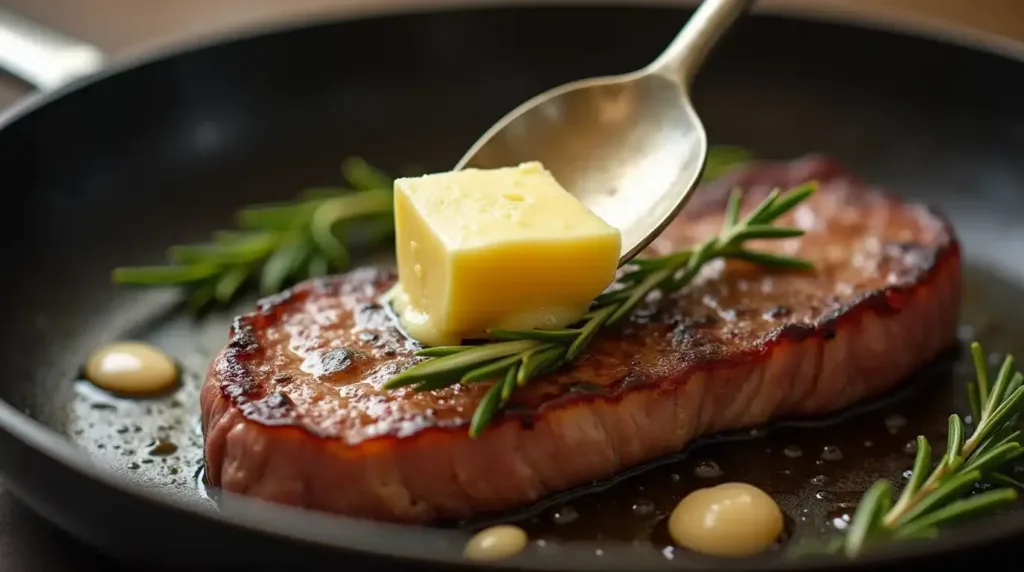
Reduce heat to medium. Add butter along with smashed garlic and sprigs of rosemary or thyme to the hot pan, stirring softly to blend the flavors. Tilt the pan slightly and use a spoon to baste the steak with the melted butter and aromatics for 1–2 minutes.
6. Check for Doneness
Use a trusted meat thermometer to measure the steak’s internal temperature with accuracy:
- Rare: 120°F (49°C)
- Medium-Rare: 130°F (54°C)
- Medium: 140°F (60°C)
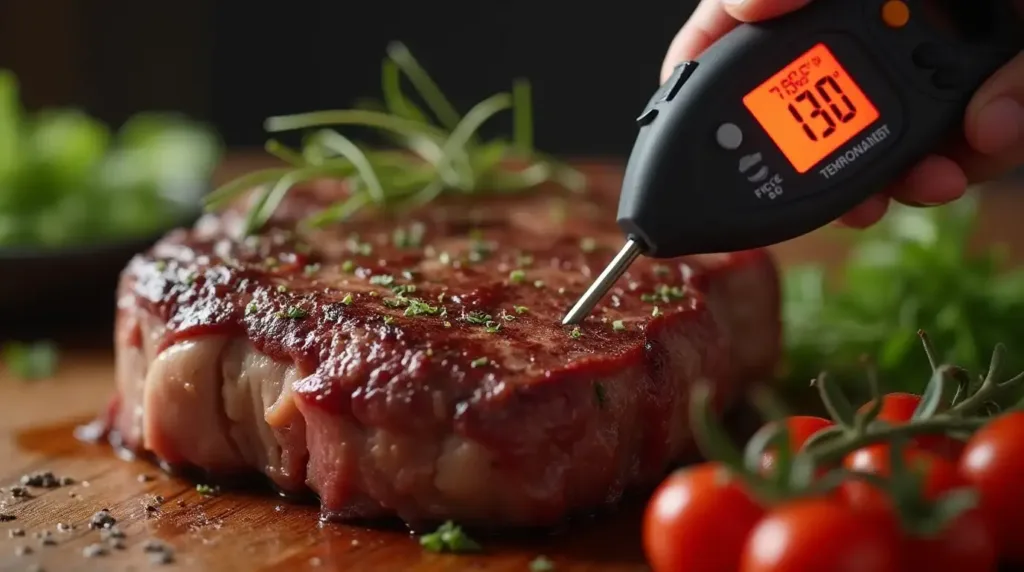
Be aware that the steak will keep cooking slightly after being taken off the stove.
7. Rest the Steak
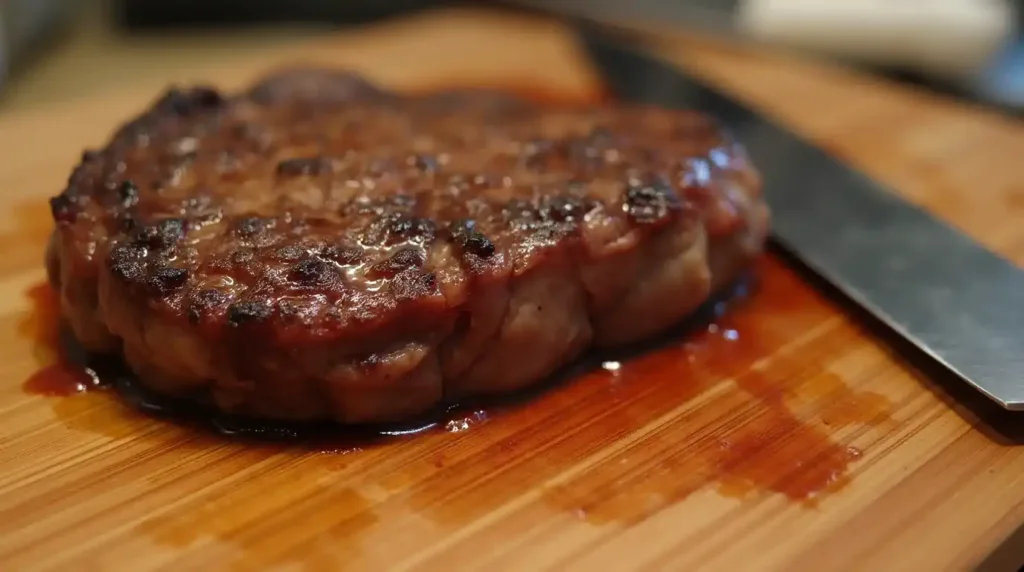
Set the steak on a cutting board and allow it to rest quietly for about 10 minutes. Letting it rest helps the juices spread evenly, guaranteeing each bite stays juicy and full of flavor.
8. Slice and Serve
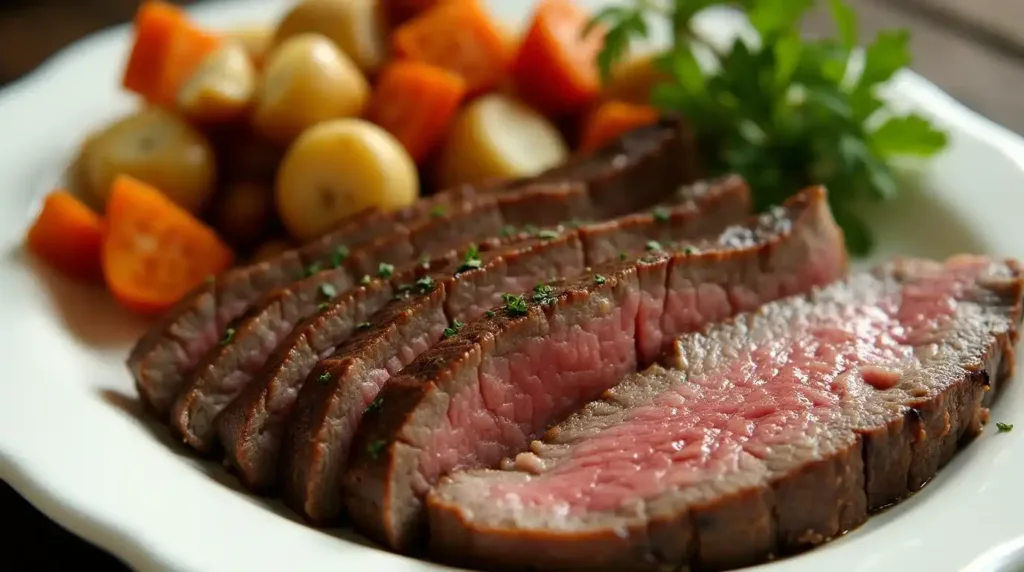
Slice the steak across the grain to keep it tender, then serve it with your favorite side dishes.
💡 Pro Tips and Variations
- Reverse Sear Method: For a more controlled cook, start by roasting the steak in a 275°F (135°C) oven until it reaches an internal temperature of 110°F (43°C), then sear in the skillet for a crusty finish.
- Oil Selection: Use oils with high smoke points like avocado or canola oil to prevent burning.
- Herb Variations: Experiment with different herbs like thyme or oregano for varied flavor profiles.
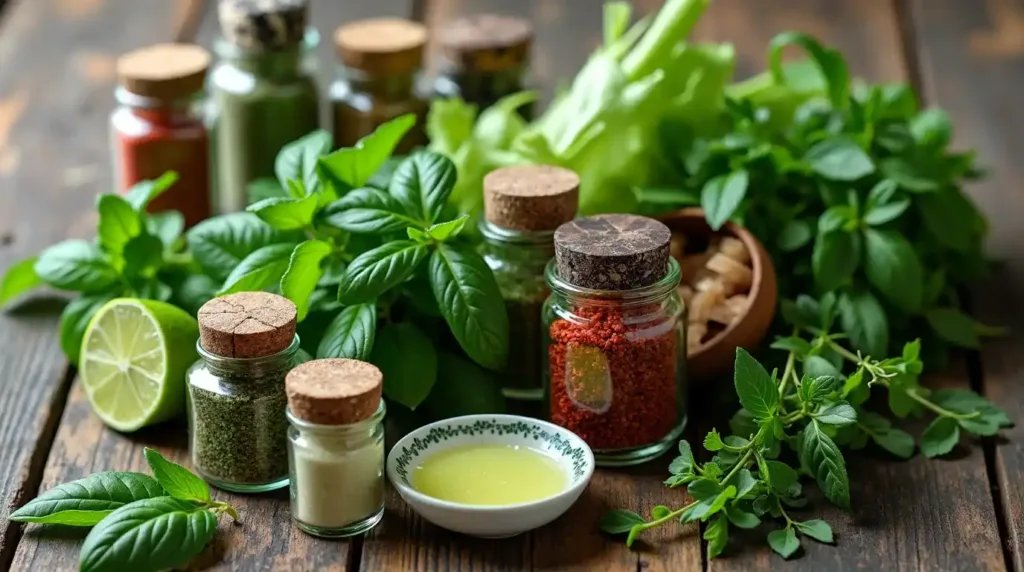
- Butter Basting: Adding a tablespoon of lime juice during basting can introduce a subtle tanginess.
🍽️ Serving Suggestions
Pair your cowboy steak with:
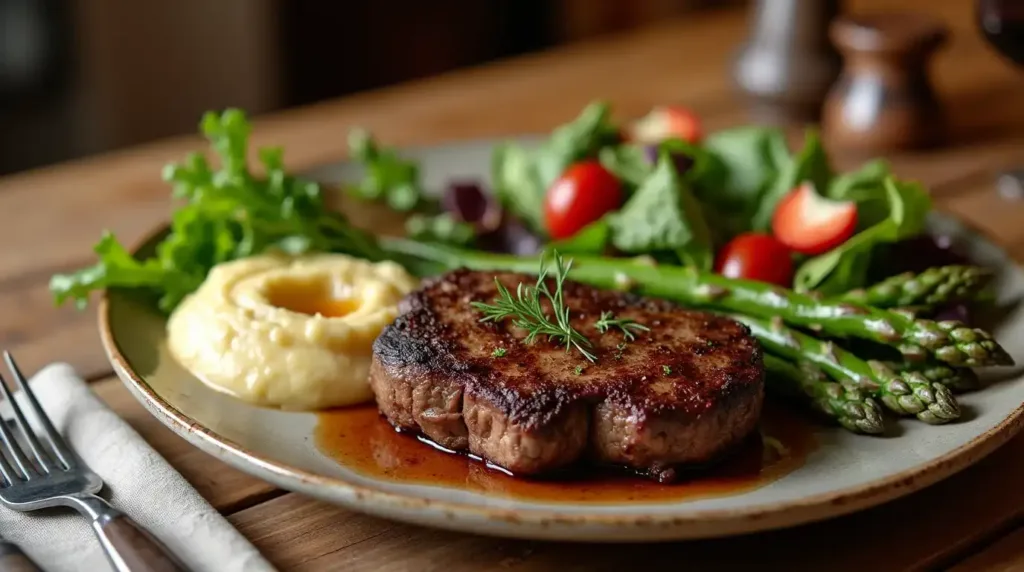
- Roasted Garlic Mashed Potatoes
- Grilled Asparagus or Green Beans
- Fresh Garden Salad with Lemon Vinaigrette
- Steamed Rice or Quinoa
For a refreshing beverage, consider a chilled glass of sparkling water with a splash of lime.
🛠️ Troubleshooting Common Issues
- Steak Too Tough: Ensure you’re not overcooking. Rely on a meat thermometer to precisely track the steak’s internal heat.
- Lack of Crust: Make sure the skillet is hot enough before adding the steak. A proper sear requires high heat.
- Overly Smoky Kitchen: Use oils with high smoke points and ensure proper ventilation when searing.
- Dry Steak: Always let the steak rest after cooking to retain its juices.
📝 Recipe Recap
🔧 Recipe Details
- Prep Time: 10 minutes
- Cook Time: 15–20 minutes
- Total Time: 30 minutes
- Servings: 2
- Calories: ~720 kcal per serving (approximate)
🥗 Nutrition Information (Per Serving)
| Nutrient | Amount |
| Calories | 720 kcal |
| Total Fat | 54g |
| Saturated Fat | 22g |
| Protein | 52g |
| Carbohydrates | 1g |
| Fiber | 0g |
| Sugar | 0g |
| Sodium | 380mg |
| Cholesterol | 165mg |
Note: Nutrition values may vary based on steak cut, added butter, and serving size.
🗂️ Recipe Classification
- Course: Main Course
- Cuisine: American, Western
- Diet: High-Protein
- Method: Cast-Iron Searing, Stovetop
- Keyword: Cast-Iron Cowboy Steak, Juicy Ribeye, Bone-in Ribeye Steak
- Skill Level: Easy to Intermediate
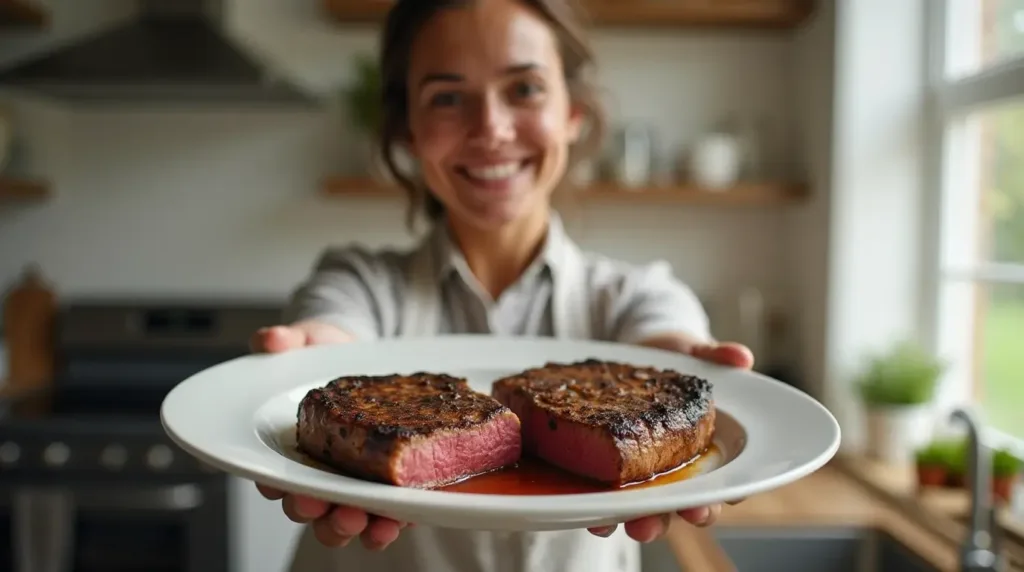
❓ FAQs
Q: Is it possible to use another cut of steak instead?
A: Absolutely! While the cowboy ribeye is preferred for its flavor and presentation, other cuts like tomahawk or bone-in ribeye work well too.
Q: Do I need a cast-iron skillet?
A: A cast-iron skillet is ideal due to its heat retention, but any heavy-bottomed skillet can suffice.
Q: How do I store leftovers?
A: Keep it in a sealed container in the fridge, and it will stay fresh for up to 3 days. Reheat gently to maintain juiciness.
Q: Can I add a sauce?
A: Certainly! A classic chimichurri or a dollop of garlic herb butter pairs wonderfully with the steak.
📚 Additional Resources
For further reading and expert advice:
- Beef Cooking Tips by Beef It’s What’s For Dinner
- Cast Iron Cooking Tips by The Spruce Eats
- Nutrition Information by MyNetDiary
- Chef Nancy Silverton’s Meat Cooking Tips
Don’t hesitate to share your cooking stories or drop any questions you have in the comments below. Happy cooking!

